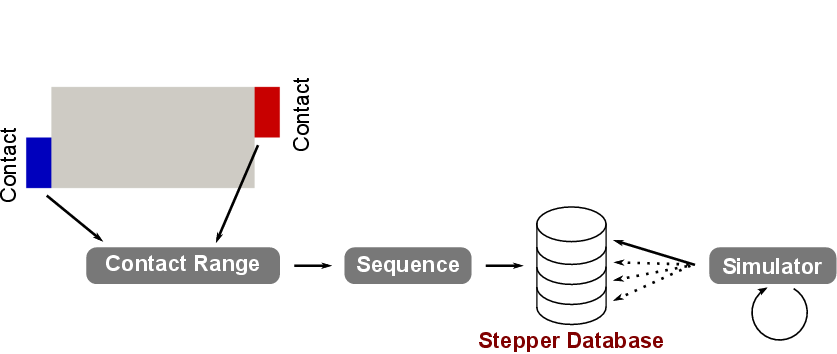
The stepper component enables to setup a set of simulation configurations according to varying step values. A typical example would be a voltage stepper, which is used to setup a set of simulation configurations according to varying contact values, being the most fundamental stepping mechanism required to determine device characteristics.
In particular, for each contact a sequence of values has to be supported (Figure 4.12). The simulator (Section 4.3.9) uses this mechanism to update the boundary conditions after each simulation, followed by a new simulation, until the stepper database has been completely processed.
Aside from voltage stepping, other stepping targets are of interest. Most importantly current stepping, deriving a set of simulation setups for a sequence of current values at specific Dirichlet contact segments. Also, stepping device geometries and doping profiles are relevant, triggering a new simulation for each element of a set of geometry configurations or doping profiles, respectively. Where the first usually requires a remeshing step - the original doping profile has to be redistributed to the altered mesh - to incorporate the changes in the device’s geometry for each new simulation step, the latter applies different doping profiles to the device for the individual simulation steps.
